- ISCOWP E-newsletters
In 2008, ISCOWP members rescued three cows: Priyavrata, Sri Uddharan Datta Thakur, and Amrita. Balabhadra, the president of ISCOWP...
Hare Krishna!
Congratulations! Together we have met the $20,000 Matching Gift Challenge! Thank you all so much! The anonymous matching gift donor is so encouraged by everyone’s participation; he would like to offer the Matching Gift Challenge again at the end of this year! We here on the farm are very encouraged, enthused and thankful. Vegan Indira, the cow we saved from the dairy industry in December 2013, came to us as a milking cow. Since milking Vegan Indira we have some realizations which we would like to share with you. This winter on the farm has been very cold (many days below freezing) yet arthik and treats were offered to the cows.You can read how we make curd from milk and use the whey (whey is left after curdling the milk to produce the curd) for a base for soup whose ingredients were still coming from the garden in early January. An article about ISCOWP appeared in the Huffington Post written by an ISCOWP member. You can read excerpts from the article or read the full article. Thank you so much.
Your servant and friend,
Chayadevi
(Irene M. Dove)
ISCOWP Co-Managing Director
Vegan Indira, the cow we saved from the dairy industry on December 2013, came to us as a milking cow. Since milking Vegan Indira we are having some realizations how amazing it is that one milking cow, who was about to be slaughtered because she could not produce enough milk by dairy industry standards, can produce so much food in the form of milk and milk products for more than one family. If everyone was to reduce their intake of milk products, keeping the intake to what was only needed for nutritional value, then there would be lees demand for milk and less cows slaughtered. And one cow could feed numerous people. We are presently providing milk for nine families for their basic needs on a weekly basis just from the milk from Vegan Indira.
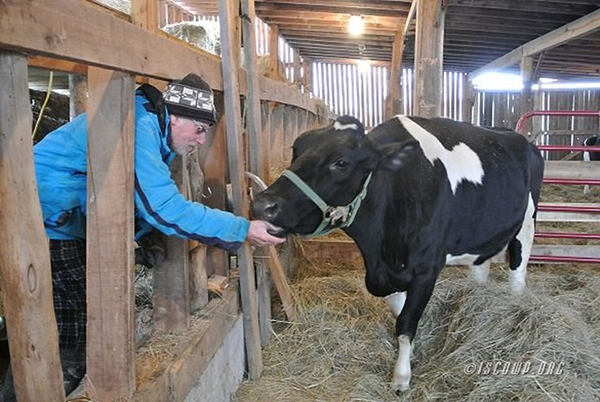
https://youtu.be/LIDMxUz8pQQ
One of the gifts that ISCOWP gives to its donors of a one time $1000 donation is an arthik (vedic ceremony) and treats offered to the cows in their honor with prayers for the donor’s physical and spiritual well being. This video shows two arthiks, one to the herd and one to Vegan Indira who was recently saved from the dairy industry. At the time of this video the temperatures were below freezing.
Please subscribe to our ISCOWP YouTube channel and be the first to view cow videos that are often not included in this e-newsletter. You can also post any of ISCOWP’s videos from the
ISCOWP YouTube channel anywhere you can online by clicking the share button under any video and in that way more people will learn about cow protection.
Heat the milk and quickly bring to a boil three times. Stir occasionally so that the skin does not form on the surface. Once the milk rises the third time, add the lemon juice. The milk should begin to curdle. We add about one cup or so to one gallon of milk. Stir the milk when it’s curdling so that the curdled milk does not stick to the base of the pot. The milk should completely curdle.
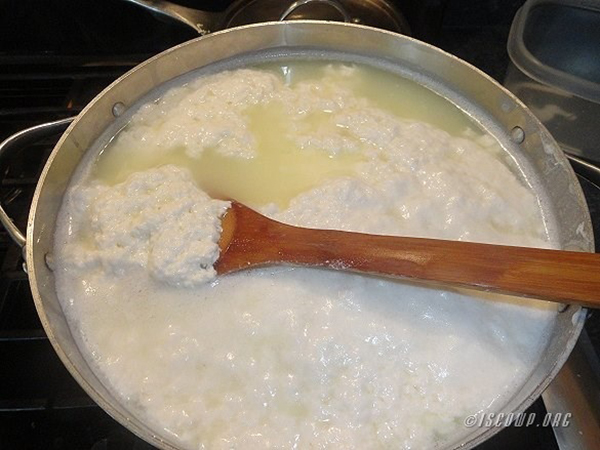
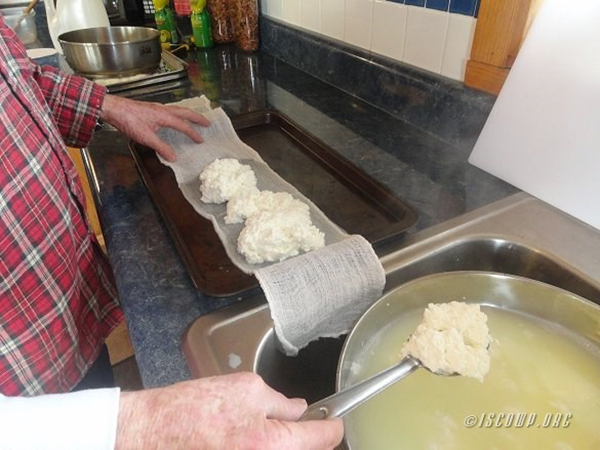
Immediately in a cheesecloth or a cotton kitchen napkin drain the curdled milk. Keep a bowl or pan beneath the cheesecloth. The collected whey can be added to chapatis, rice, veggies or soup. You can also cool it and water your home or garden plants.
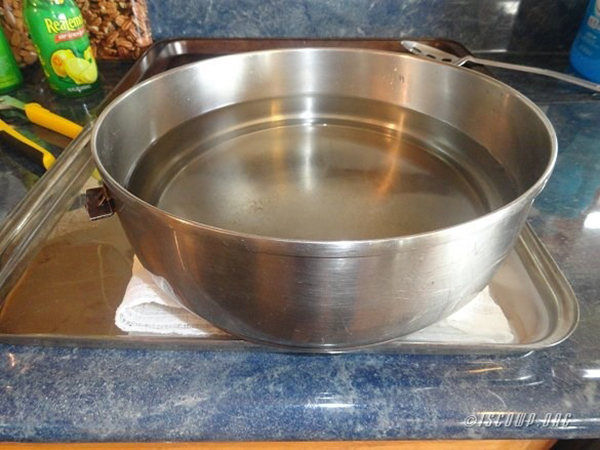
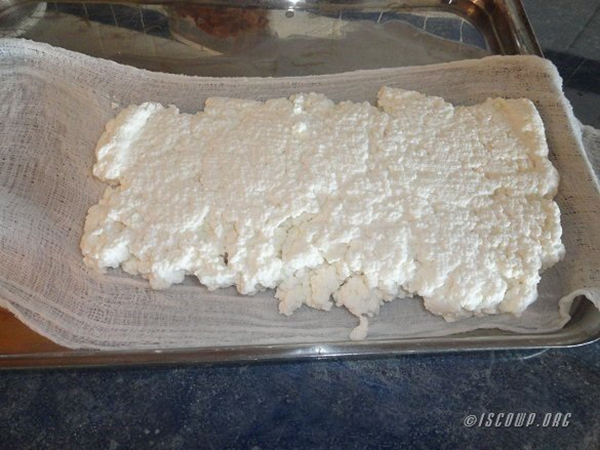
Bring the cheesecloth or napkin together. In so doing you will also squeeze the curdled milk. Keep the cheesecloth with the curdled milk on a tray or plate. Place a heavy weight on top of it. We have used a pot filled part way with water. After 30-40 minutes the paneer will be ready. Open the cheesecloth or napkin. You will see a beautiful block of paneer (curd) all set.
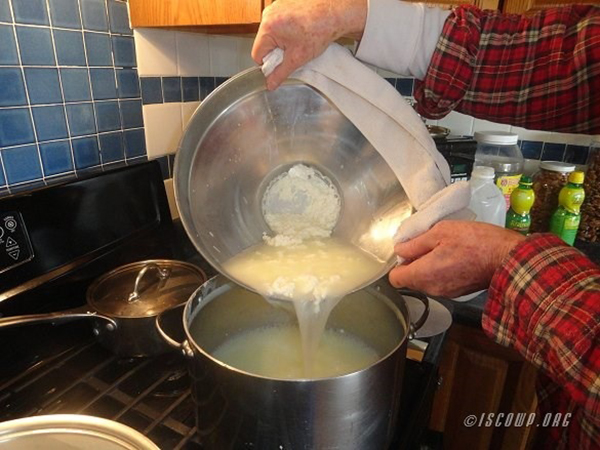
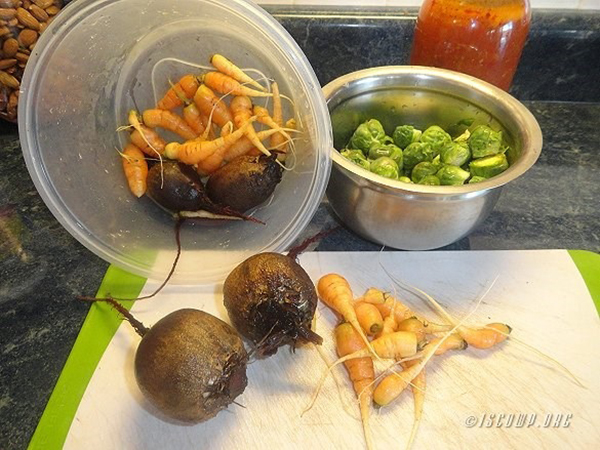
The whey is poured into a pot along with whatever curds are left. Along with produce picked fresh from our January garden and canned tomato sauce from last year’s garden, a soup is made.
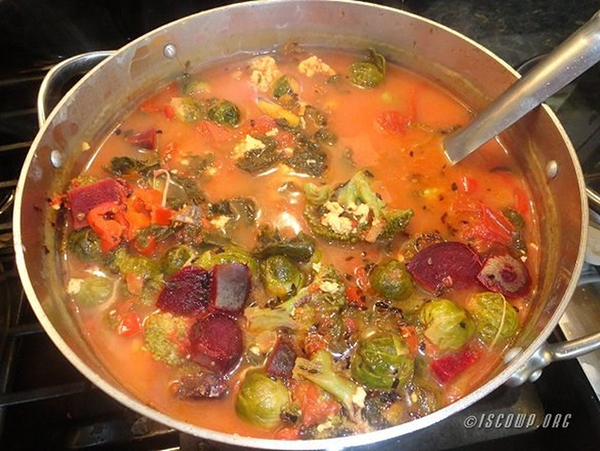
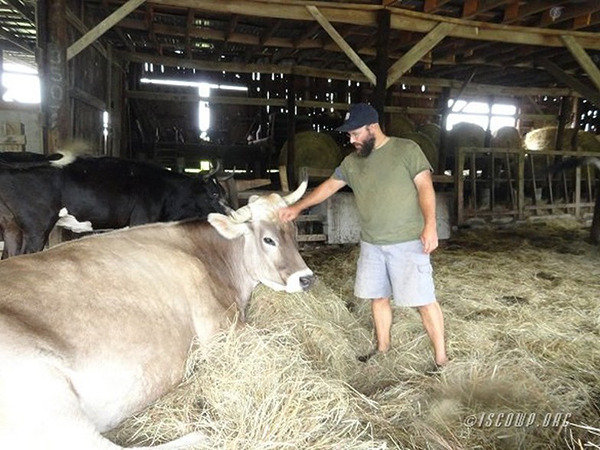
“For most Western people, when we think of the cow we think of her as dinner, as the skin behind a slick new coat or a sturdy new pair of shoes. We see her as a mute and dumb part of the classical American rural landscape, or we see her as an archetypal symbol of the inscrutable horde of Hindu cosmologies and theologies. Yet the physical and metaphysical reality of the cow as she actually is, beyond our romanticization and depersonalization, defines our own physical and metaphysical reality. That is why the protection of mother cow is so essential in our efforts towards creating an ecologically-sound present and future.”
“Many diverse peoples around the planet are beginning to recognize that living beings like the cow need to be seen as more than mere commodity, more than a machine to satisfy our tastes, and they are adjusting their lifestyles gradually and accordingly. Then there are those sagely souls who take it to a deeper level, giving a physical and metaphysical example of culture and theology based around the protection of the cow. It is these souls who in so many ways are at the vanguard of our ecological movement. One such example of those in the vanguard is the International Society for Cow Protection (ISCOWP).”
Within the article there are some interesting links. One is to the publication Livestock’s Long Shadow. A publication of the Food and Agriculture Organization of the United Nations. It is a very comprehensive study of how the animal industries’ practices are affecting the planet. It is available in PDF. Another link is to an article in The Independent on how 2014 is likely to be the year Veganism goes mainstream.

7016 SE 92 Terrace
Gainesville, FL 32641 USA
Phone: 352-792-6777
E-mail ISCOWP
Keep up with the latest news from ISCOWP. Sign up with your e-mail address to receive updates.
"*" indicates required fields
© 2023 This is the only official site of The International Society for Cow Protection, Inc. (ISCOWP) incorporated in 1990, located only in Gainesville, FL, USA. ISCOWP and The Lotus/Cow symbol are registered service marks of The International Society for Cow Protection, Inc. Website content can not be reproduced without permission.